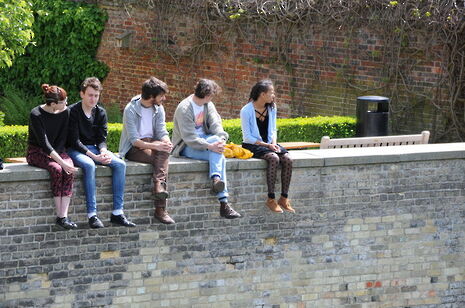Statistics reveal little change to student backgrounds
Statistics released by the university show that there have been only slight changes in the backgrounds of the student body over the last year

New statistics released by the University of Cambridge show narrow increases in the number of women, disabled, and BME students in most categories compared to last year.
The statistics, which cover the academic year for 2015-16, show that there are currently 18,442 full-time students, the third highest number ever at Cambridge.
In October 2015, for the fourth time since records began, Cambridge admitted more postgraduates than undergraduates. There were 3,800 postgraduates admitted, compared to 3,748 undergraduates. The numbers have been very close for the past six years, though they are influenced by the fact that postgraduate intake often occurs outside of October, particularly among PhD students.
The statistics show an increase in the number of students from outside the United Kingdom. The proportion of Overseas students increased, continuing a steady growth that has been occurring since 1998-99.
The total number of students from the Islands (the Channel Islands and the Isle of Man combined) fell to just two across all current cohorts – the lowest number since records began in the 1980s, and a fall from a total of 18 last year. No students from the Islands were admitted in October 2015.
There were slight changes in gender proportions across some subjects, and the university as a whole. The proportion of female full-time students increased to 45.6 per cent from 45.4 per cent – the most since 2012-13, but below average across the last twenty years.
For undergraduates, Mathematics continues to be the most male-dominated subject, with the proportion of female students falling from 14.72 per cent to 13.76 per cent. If the Education Tripos, which contains several different specialisms, is considered as a whole, then History of Art is the most female-dominated subject, with 8 male undergraduates and 70 female.
Natural Sciences remains the most heavily-subscribed undergraduate degree with a total of 2,080 students. It has twice as many enrolled students as Engineering, which is the second largest at 1,022.
There were minor changes in the ethnic makeup of the student body. The proportion of white students dropped from 69.5 per cent to 68.3 per cent, while there were increases in the number of Indian and Chinese students as an overall proportion (by 0.3 and 0.2 per cent respectively). These changes were primarily present among the statistics relating to undergraduates.
The number of full-time students who self-identified as disabled increased, with the proportion of those who listed themselves as having “No disability” falling slightly from 91.74 per cent to 91.23 per cent. Among the changes was a 0.52 per cent increase in the number of students who listed themselves as having “A mental health condition, such as depression, schizophrenia or anxiety disorder” – a change in real terms from 268 students to 338.
 News / Uni Scout and Guide Club affirms trans inclusion 12 December 2025
News / Uni Scout and Guide Club affirms trans inclusion 12 December 2025 News / Cambridge Vet School gets lifeline year to stay accredited28 November 2025
News / Cambridge Vet School gets lifeline year to stay accredited28 November 2025 Science / Did your ex trip on King’s Parade? The science behind the ‘ick’12 December 2025
Science / Did your ex trip on King’s Parade? The science behind the ‘ick’12 December 2025 News / Cambridge study finds students learn better with notes than AI13 December 2025
News / Cambridge study finds students learn better with notes than AI13 December 2025 News / Pembroke to convert listed office building into accom9 December 2025
News / Pembroke to convert listed office building into accom9 December 2025








